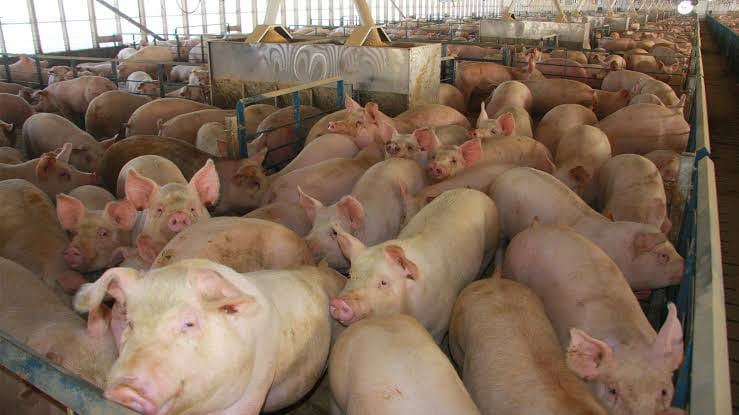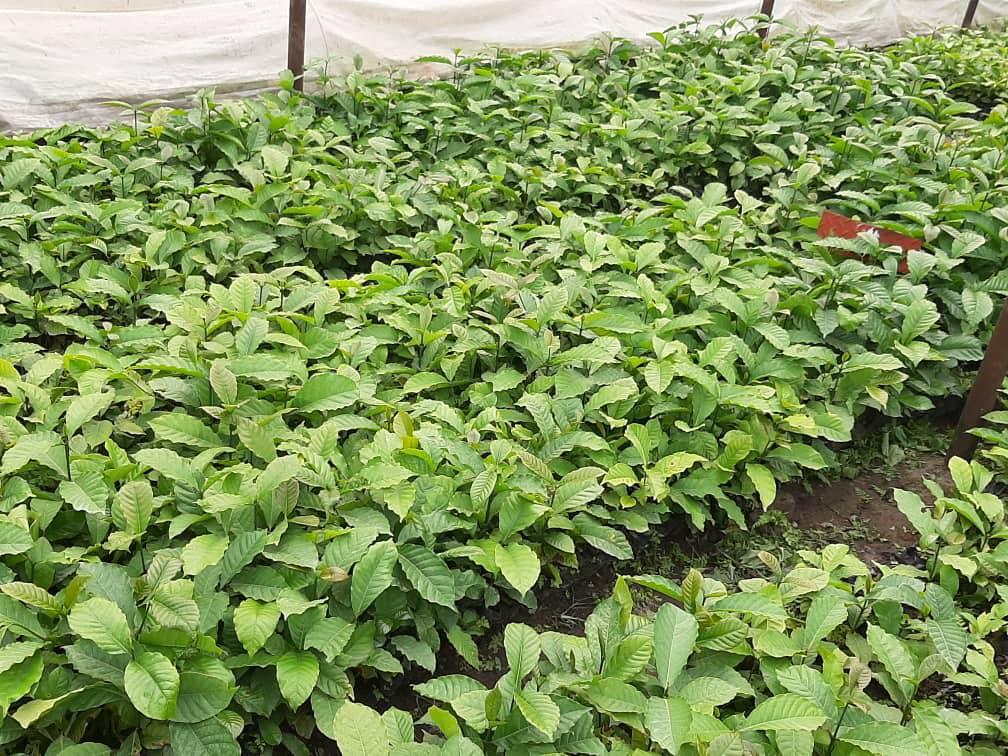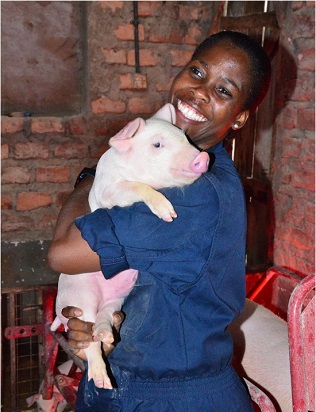By Christopher Mulindwa
We had a detailed discussion on wean to market as an independent production business in part 3.
In this part, we are discussing Wean to Finish and stock to fatten/finish as independent production businesses too under small/medium and large investments.
ALSO READ:
GUIDE: What To Consider When Starting UP A Commercial Pig Farming Business (PART 1)
GUIDE: What To Consider When Starting UP A Commercial Pig Farming Business (PART II)
GUIDE: What To Consider When Starting UP A Commercial Pig Farming Business (PART III)
WEAN TO FINISH
Wean to Finish is not a common business among producers in developing pig value chains including ours because it is a capital intensive venture and demand s commitment and patience. In wean to finish business, farmers produce piglets and raise them until slaughter weight. The need to feed sows so that they keep producing piglets and growing the piglets until slaughter weight requires resource availability.
Therefore before setting up a wean to finish operation, a farmer must ensure availability of enough resources required to run the farm from start to at-least the date of first sale. If you start with inseminated or eight months gilts, you will need about 354 days or 11.8 months before your first sale is made:
– Gestation about 114 days
– Finishing about 180 days
– Variations & delays about 30 days
Almost, you will only be spending for the first financial year before being able to sale a product.
Like other operations, the most challenging item on the budget for this one too is feeds. You can feed well for the first four months and get amazing results but the absence of enough quality feeds for a week or two can draw you back and as well rob you of the money initially invested on buying feeds. Therefore planning your resources well is very important. You need to ensure feeds required are available to maintain Sows and fattening pigs until slaughter.
The Uganda pig sector is shifting to Wean to finish operation. This shift is being led by foreign investors. I know but few Ugandan pig farmers doing Wean to Finish operations. This production business is one of the reliable ways for ensuring consistent supply of both quality and quantity of pork required by the market. The other option is stock to finish.
However, for those intending to involve in serious pork production, Wean to Finish is the only operation I can recommend for now considering the status of our piggery sector. If you acquire parent stock and commercial boars from genuine sources, you produce piglets of known quality in terms of:
– Feed Conversion
– Muscling potential
– Average Daily Gain
– Killing Out Percentage etc
If piglets are outsourced, chances of stocking those of poor quality are high because there is no farms in Uganda specializing in producing piglets for fattening for sale to other farmers to finish.
Don’t depend on guess work, Wean to Market is like a marathon. Any small mistake will reduce your chances of reaching the finishing line on time.
Due to a limited number of genuine breeders in the country, you can easily be failed by genetics. Do due diligence before making final decisions. Avoid buying gilts/sows for parent stock and commercial boars from unreliable sources.
STOCK TO FATTEN/FINISH
In this production type, the farmer purchase piglets specifically bred for fattening from a breeder or other producers owning parent stock and grow them until slaughter weight. After selling, he buys again and the cycle continues. In Uganda, this is still a complicated production type because it is easy to stock stunted, diseased and poor quality piglets. Also, producing piglets on farm is cheaper than out sourcing. Read more about this production type from Farming Pigs For Money.
For any of these production businesses to succeed:
1. Source for quality genetics. Keep sows and fatteners whose production parameters are known. Fattening pigs whose production potential not known is like driving a journey whose final destination isn’t known. You can’t plan for fuel, determine whether you have reached or when you will reach. This means you work in the darkness because there is no realistic goal aimed at. Besides that, you may end up with costly uncertainties either with quality or taste of pork! In worst cases, the market may refuse to pay a premium price or even reject carcasses produced.
2. Manage your resources appropriately. Like I said earlier, lack of feeds for a week can draw you many miles back. Plan well, fatten pigs that fit the budget at hand and keep increasing numbers as more money comes in. Think twice before spending large sums of money on items that are not very necessary.
3. Develop your skills and knowledge base. Learn as much as you can and keep acquiring new knowledge about the breed lines kept and how you can put them to maximum production. Your breed source must provide all information about management conditions for their pigs. Don’t try to compromise but keep finding cheaper alternatives incase those suggested are very expensive.
4. Fatten numbers that make business sense. The profit margin per fattened pig is small therefore the higher the number of pigs fattened the more profit. For smallholders, a sow herd below five might not make business sense most especially if using commercial feeds. At least 50 pigs should be fattened at any given time. If this is not possible for individuals, teaming up and farming as groups is the best option. Good profits usually come when you at least produce 200 fatteners per year. An average of Uganda shillings 40,000,000/= (Forty Millions) or around $11,000 (Eleven thousand dollars) can be generated if you sale a kilogram at 10,000/= (Ten thousand shillings). This is only possible when the main feed ingredients are produced on farm and only concetrates are bought. Remember, you have to reduce feed costs as much as possible but without compromising the quality and quantity of nutrient recommended for the pigs.
Also, remember that the smaller the number of pigs fattened the longer it will take you to recover your fixed investment. For those going fully commercial, 250 sows as parent stock is an ideal number. Here you produce 5000 pigs for slaughter per year. This is approximately 350 tones of pork per year. A year or 2 are enough for you to recover the money invested if implementing a good marketing strategy.
You can start small but a big take home shouldn’t be your main objective. Focus on growing your farm’s capacity to generate reasonable profits. This means you will keep investing back the little earned.
5. Ensure strict bio security. Raising good pigs economically isn’t important if you are exposed to the risk of African Swine Fever. In just a few days, your farm can go back to zero. Therefore, educate yourself about the disease and talk to your friends demanding farm visits about the risks they may impose to your farm. No visitations must be allowed and incase allowed, proper bio security measures must be taken. Disinfection must be a routine whenever workers, vehicles, machines move in and out of the farm. Feeds must be sourced from safe places and all newly introduced pigs isolated until confirmed safe. Dogs must be kept in farm fences, meat eating birds, rodents must not access the pigs. Pork slaughtered off farm must not access the farm. In fact people attending to pigs must not visit abattoirs or pork joints.
In Uganda meat inspection is loose and even though inspected I have never seen an infected carcass rejected. Therefore it is easy for pork joints/butchers to sale infected meat. Also, abattoirs and pork joints are high risk places. Don’t take any chance, African Swine Fever is endemic in Uganda so anything can happen at any time.
6. Find a way of tracking your farm performance. The goal in pig fattening is to produce heavy carcasses of at least 70 kilograms with good lean percentage in about 24 or less weeks. Your sows must wean at least 10 strong and healthy piglets per litter and also give not less than 2 litters per year. Of course these are the average production trends for modern sows but as the technology changes they will change too for the better, be on the look out for new developments. In small/medium farms, make use of books. I have developed a number of simple to use record sheets. I shared some in my book, go buy it or find someone qualified to assist you develop record sheets for your farm. For full commercial farms, buying a pig farm record keeping software is ideal. I can suggest some options if you ask me.
7. Understand your market. If you produce quality pigs with intentions of selling in the common market, you have lost the game. Identify buyers who are quality sensitive and if quantities produced are worth, think about exporting to nearby countries whenever possible. Kenyans are sourcing pigs for slaughter from Uganda, this must point you to something already. Tanzania, Congo, Rwanda are importers of pork. Go find a good market that will pay a premium for your efforts. You can do it!
8. Be consistent with quality, quantity and production intervals. I have personally invested a lot of effort & resources in searching and understanding premium markets. In some instances I have had my contracts cancelled or Pork rejected. Where the contracts are cancelled, supply intervals and meat quantities would be the problem and where Pork has been rejected quality is the main reason. I have lost dearly in this but will never give up on finding a way I can do it better next time. You can learn from me so that repeat the similar mistakes are not repeated. There are premium customers who buy once a week, some buy twice a week, others every after two days and the rest everyday. The problem, they all need you to supply same quality at agreed intervals without fail.
Finally, these markets don’t pay spot cash. There is some delay of a week or even a month! You must be able to wait without your farm collapsing. Also try to negotiate for a shorter delay of at-least 3 days or a week most especially if operating on a small budget.
9. Slaughter from an abattoir with a meat inspector. Some of these markets reject pork which is not accompanied by an inspection report from a public Veterinarian.
10. Your sows farrowing cycles must be harmonious with your fattening program rest you run short of space. Go read about weight and time fixed productions. I wrote about it in my book from page, 114 to 116. You can as well search online. I don’t want to go into it to avoid making this publication too lengthy.
Lastly, making feeds on your farm using Nuscience’s nutritional solutions will help you cut feeding costs while availing quality feeds to your pigs. Use the pig 25% concetrate where access to quality Soycake and Sunflower is difficult or the pig 5% concetrate where you have access to quality Soycake and Sunflower.





